Tinos, Greece – A quiet, picturesque Greek island just 20 minutes from Mykonos. If you're looking for an authentic destination largely undiscovered by mass tourism, this travel guide to Tinos Island gives you everything you need to know.
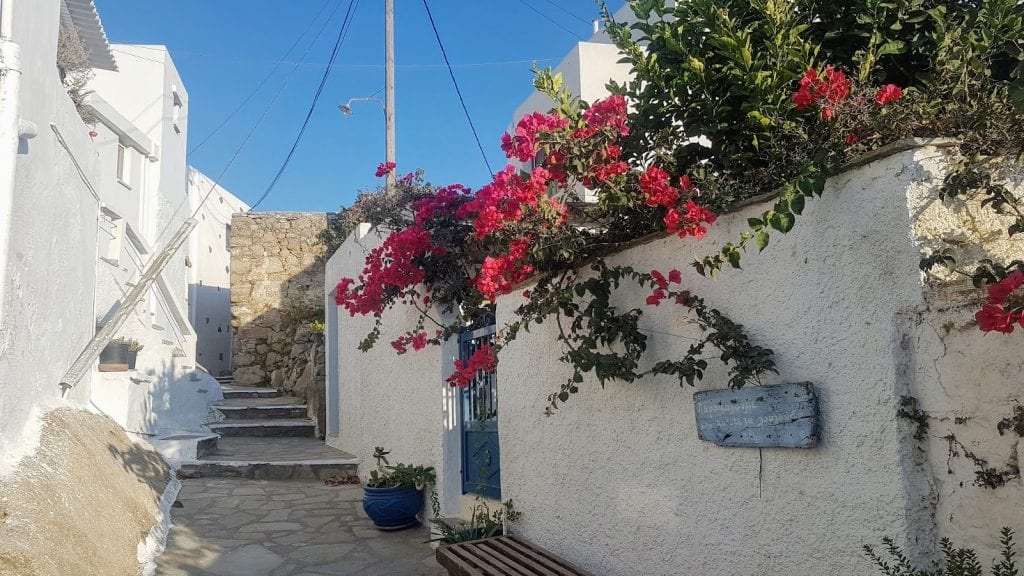
Tinos Travel Guide
With big name destinations such as Santorini and Mykonos taking all the limelight, some Greek islands seem to fly under the radar. Tinos is one of those islands.
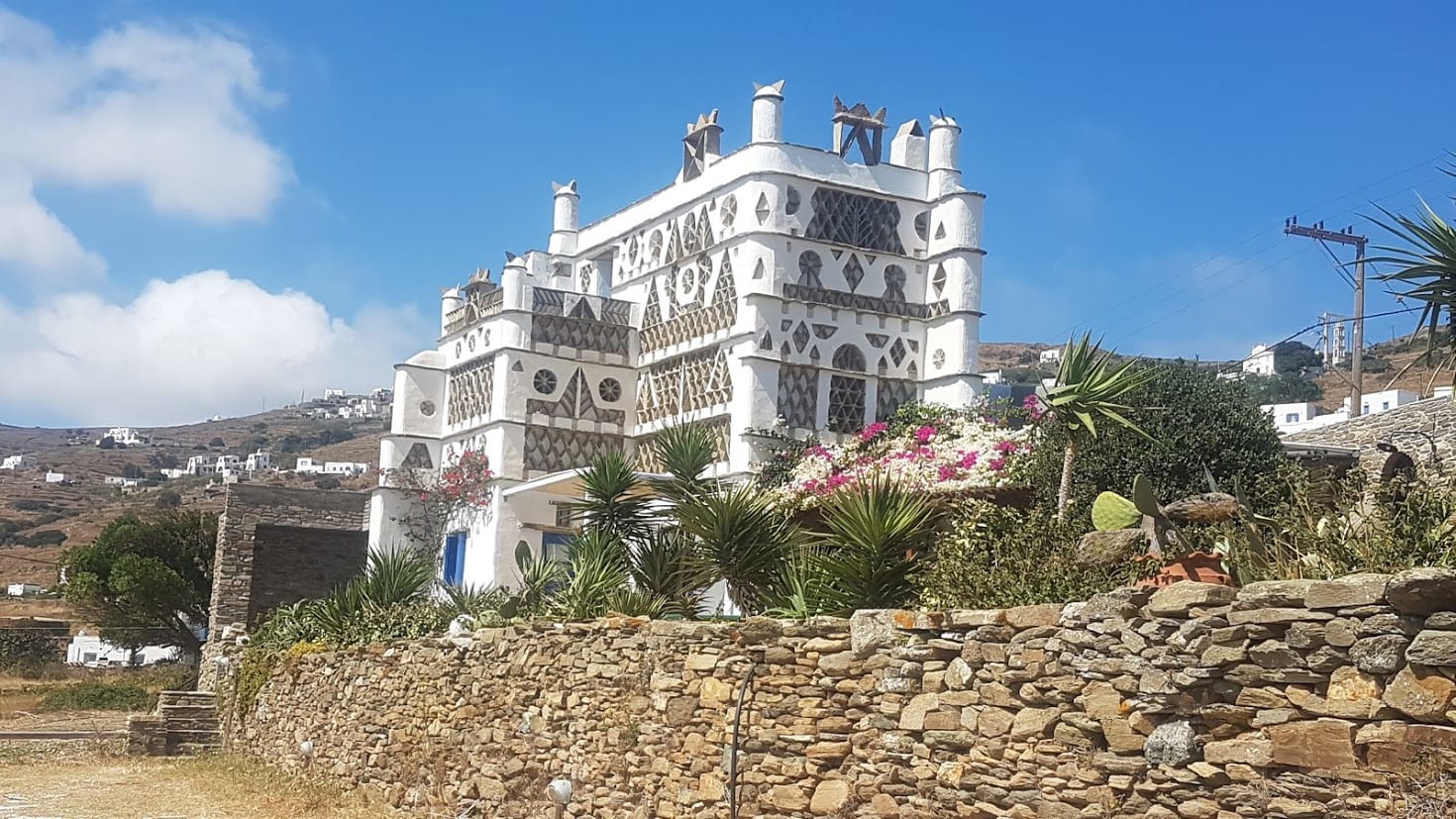
Now, I'm not going to say that Tinos is completely unknown… that's very far from the truth. In fact, it's a major place of pilgrimage for devout Orthodox Christians in Greece.
But I'd say that on an awareness scale for non-Greek visitors to Greece, Santorini would be a ten, and Tinos would probably be a one.
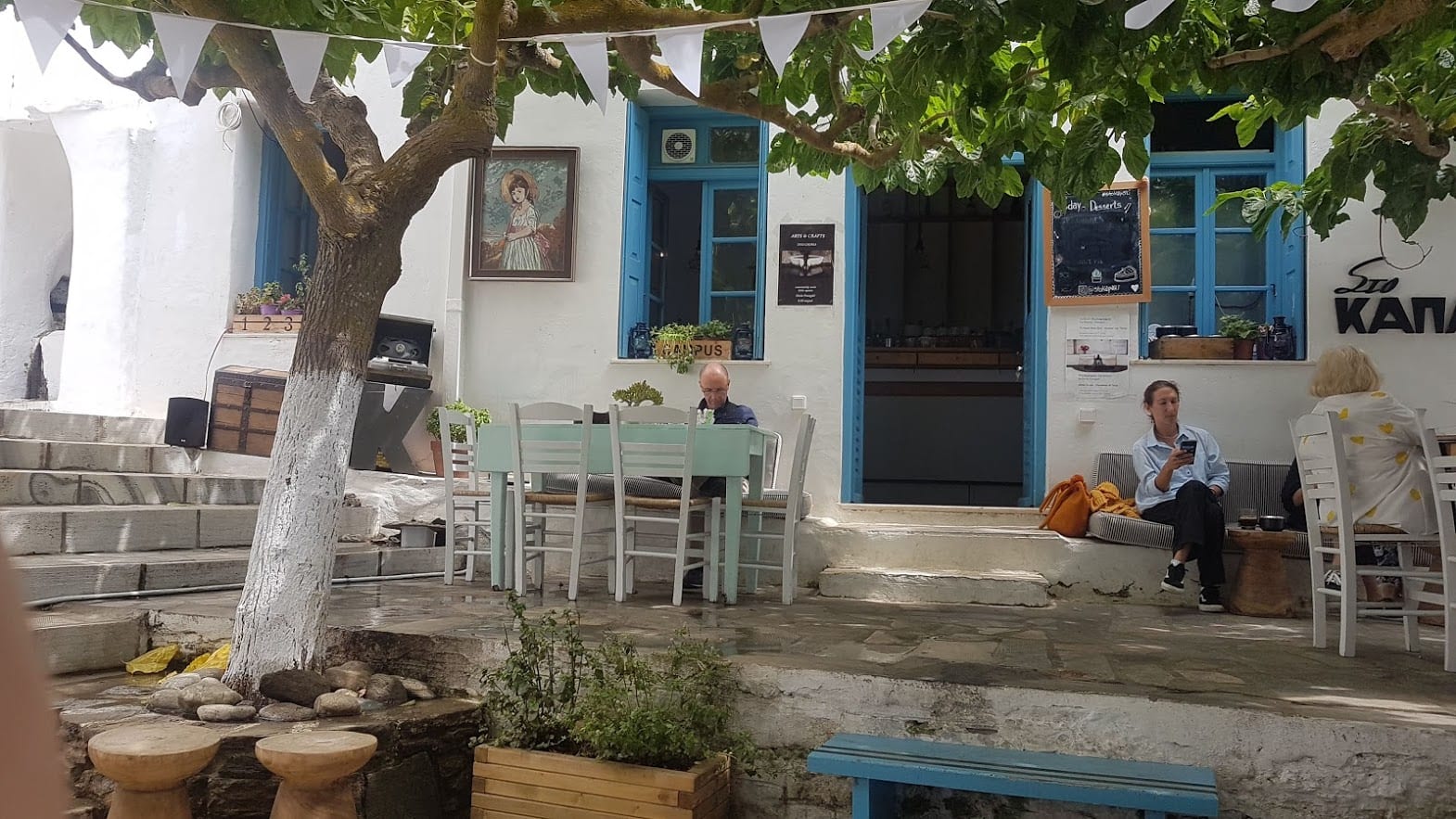
And that is a very good thing. It means that Tinos has maintained an authentic charm that disappeared from Santorini years ago. It also means that it is quieter and more relaxing.
Worried that there's not enough to see and do in Tinos? Don't be.
There's more (and arguably more interesting) villages than Santorini, better beaches than Mykonos, hiking trails, incredible food and more.
And yes, there's plenty of photo ops, as the Mrs discovered below!
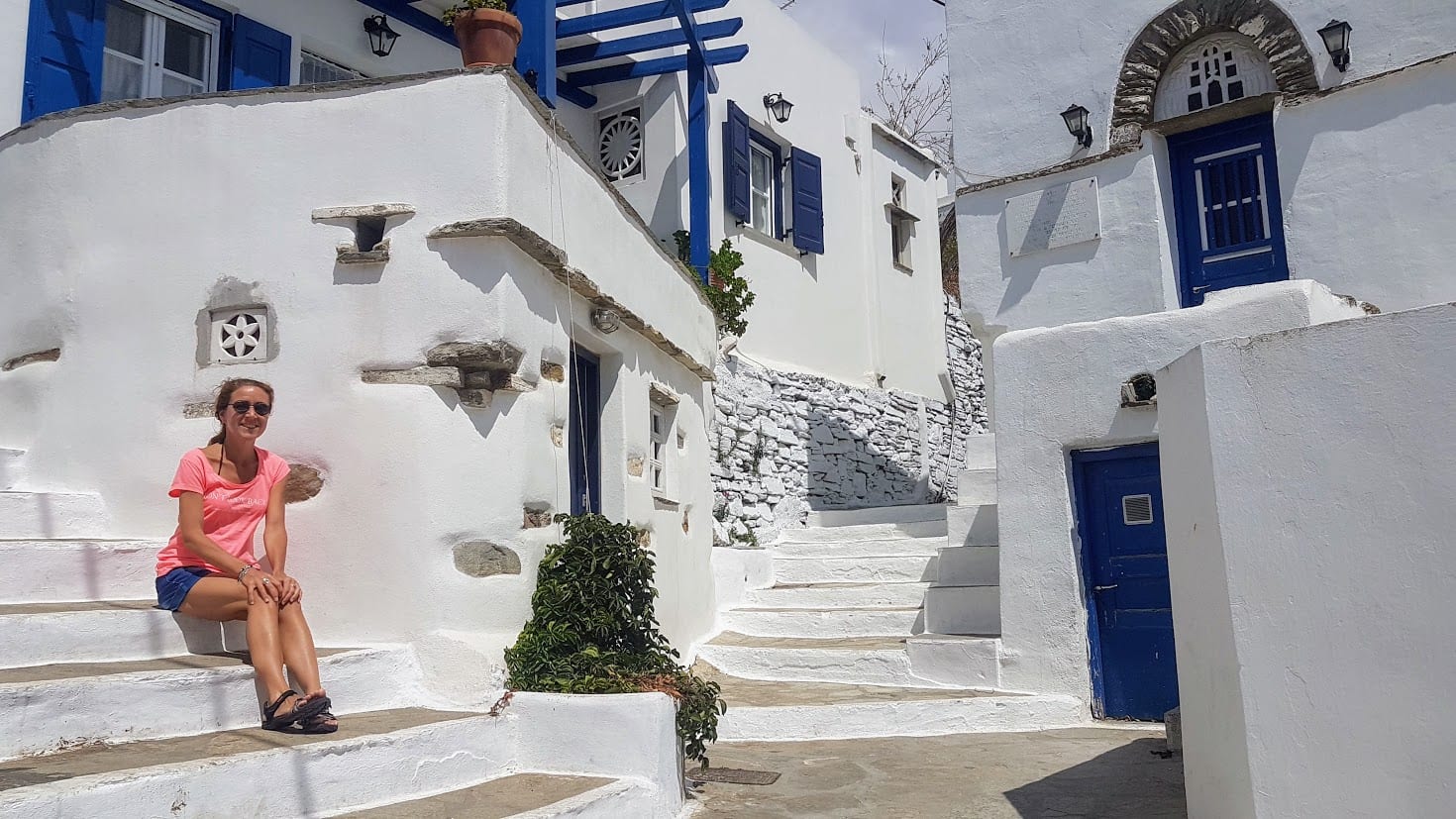
Who is Tinos for?
We spent over a week in Tinos exploring the island, and it probably wasn't enough. That said, I always like to leave something unseen, as it gives an excuse to go back to a place and visit again!
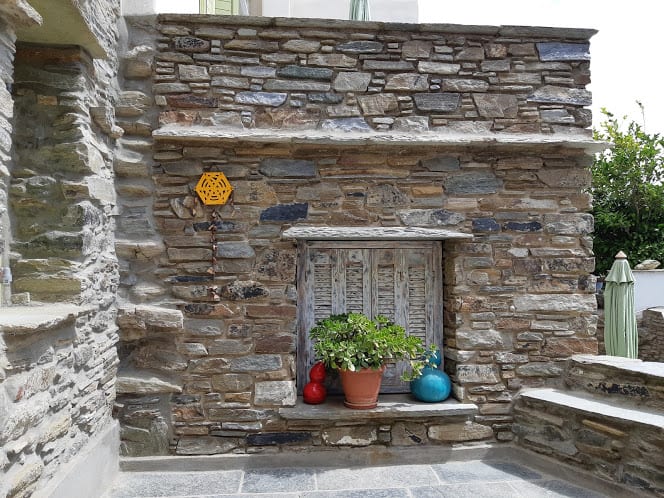
From our time on the island, I'd say that Tinos is for:
- Beach junkies – There's some incredible beaches waiting for you!
- Independent travelers – You'll need to get some wheels to make the most of your time in Tinos.
- Outdoor lovers – There's an impressive network of hiking trails in Tinos.
- Anyone that thinks Mykonos and Santorini is/could be overrated and wants to visit an authentic Greek island instead.
- People who want to enjoy a quiet, relaxing holiday.
** Travel Guide to Andros and Tinos now available on Amazon! **
Tinos Greece Travel Guide
Are you ready to discover your new, favourite Greek island? This travel guide is designed to introduce you to Tinos, Greece, and gives you all the information needed to plan a trip there.
- Where is Tinos and how can I get there?
- What’s so special about Tinos?
- When is the best time to visit Tinos?
- Sightseeing in Tinos – The villages in Tinos
- Churches and Monasteries in Tinos
- Beaches in Tinos
- Hiking and other outdoors activities in Tinos
- Where to stay in Tinos
- Getting around Tinos
- Eating in Tinos
Where is Tinos and how can I get there?
Tinos is one of the Cyclades islands. You need to take a ferry there, and it's just a couple of hours from Athens (Rafina Port), and 20 minutes from Mykonos.
Tinos can be reached from both Piraeus and Rafina ports in Athens, but Rafina is a better choice if you're going directly from Athens airport.
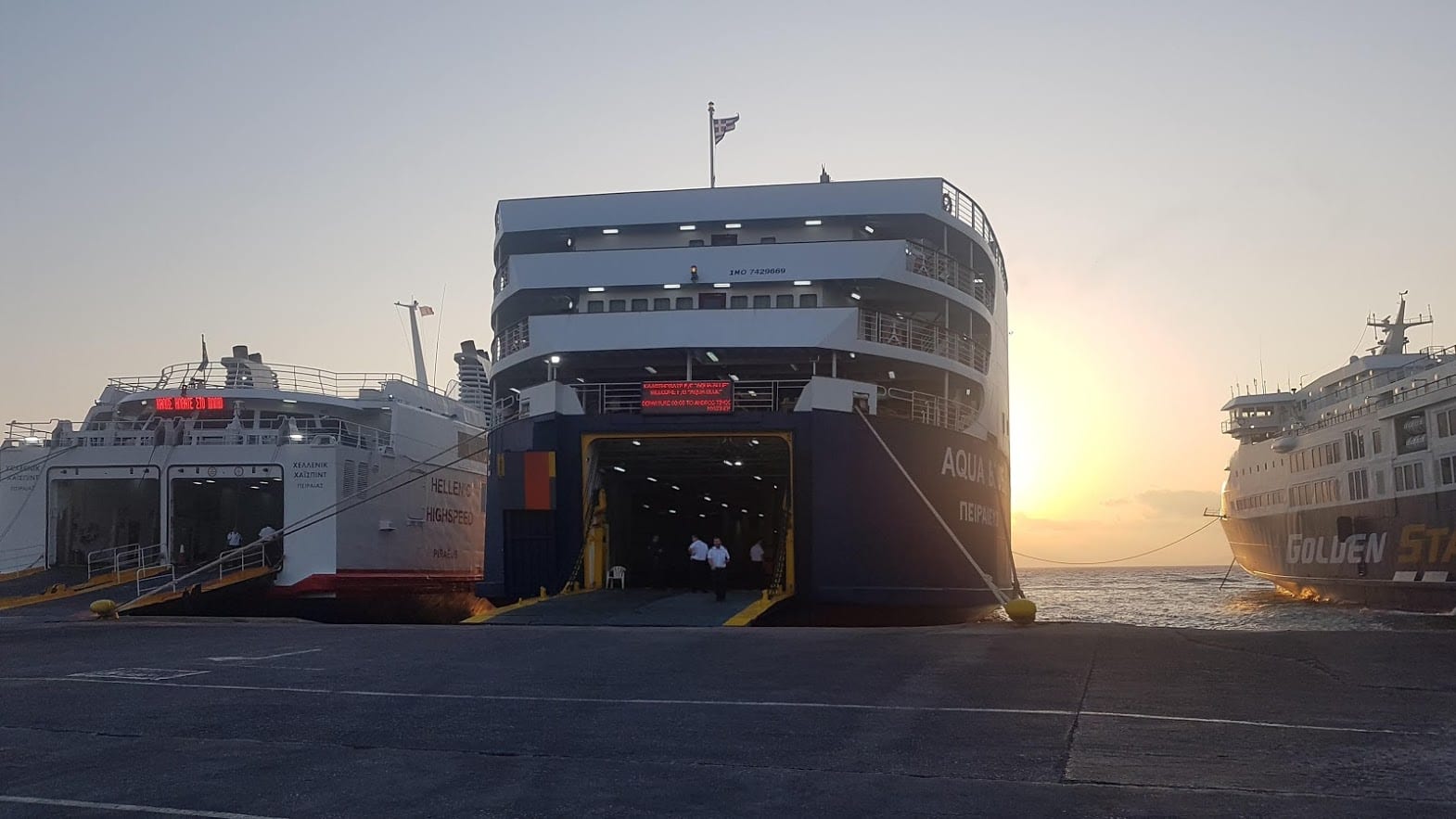
There are several ferries and high-speed ferries to choose from, departing at various times of the day. If you get sea-sick easily, we definitely recommend the slower ferries.
Read this more extensive article on how to get to Tinos from Athens.
Is Tinos worth visiting?
Tinos is a really fascinating island. It’s one of Greece’s holiest places and is a must-visit destination for religious Greeks and other Orthodox Christians. There are over 1,000 churches in Tinos, and if you explore the island you will literally spot hundreds of them.
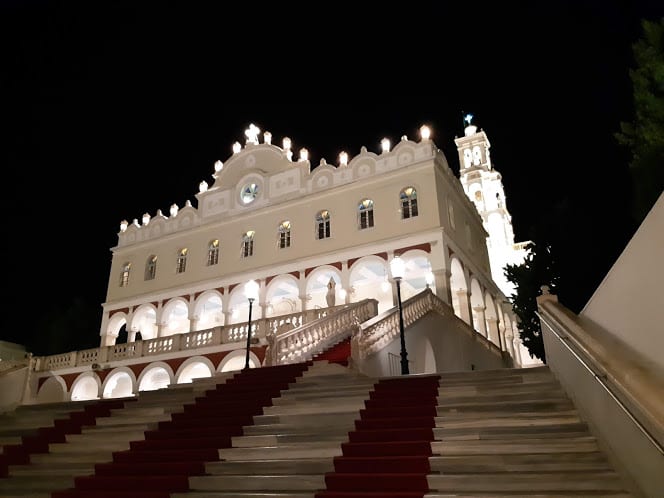
You may be surprised to know that not all of them are Christian Orthodox – there are many Catholic churches in Tinos.
The biggest and most impressive church in Tinos is the church of Panagia Evangelistria in the island’s capital and port town, the Chora.
Every year, on the 15th of August, thousands of people flock to Tinos to worship the Assumption of Virgin Mary.
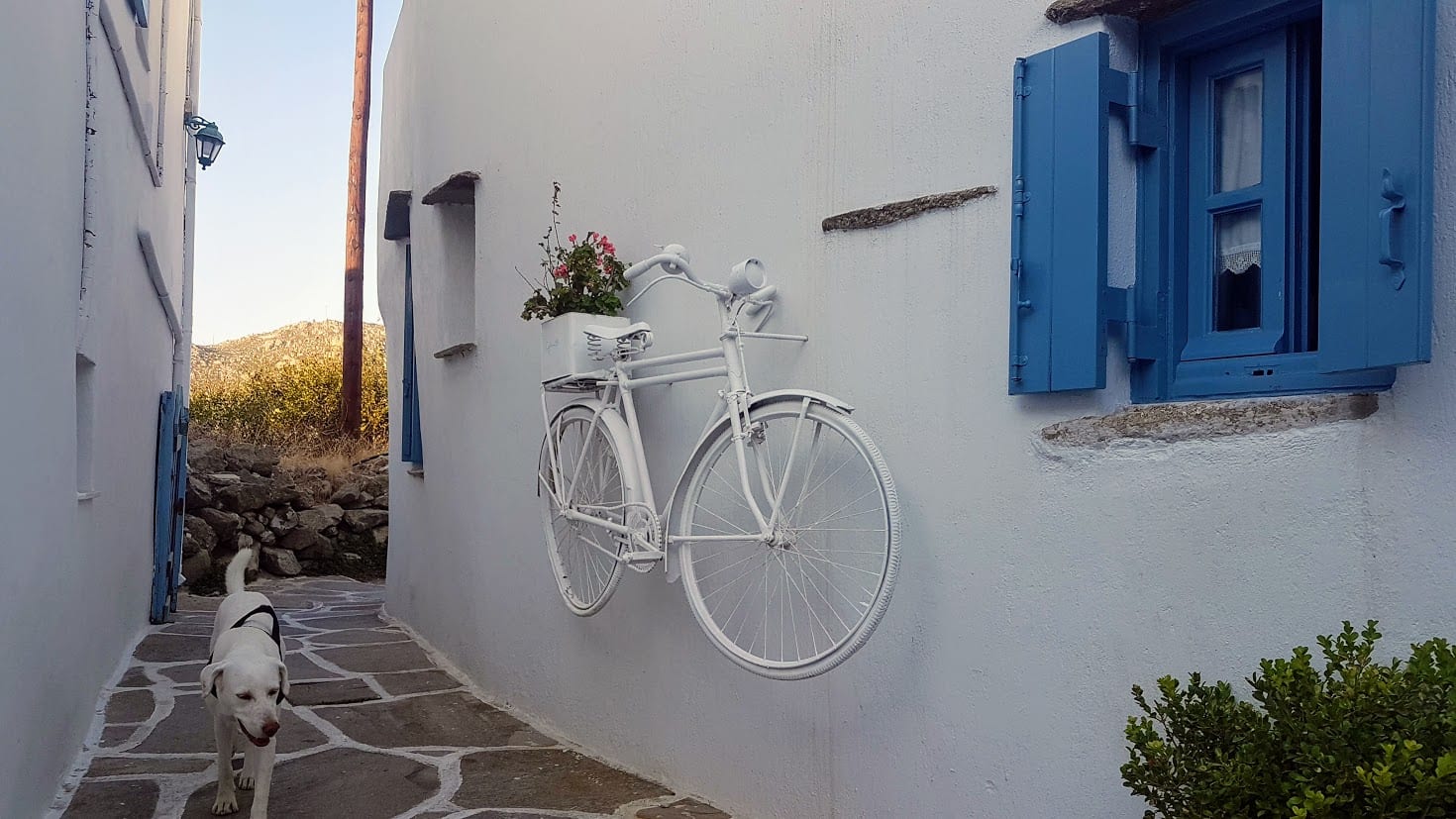
For the non-religious visitor, the most notable thing about Tinos is its picturesque villages. Few Greek islands can boast as many pretty villages as Tinos! You can visit pretty much all of them by car, while there are also several hiking paths that you can use to explore the island.
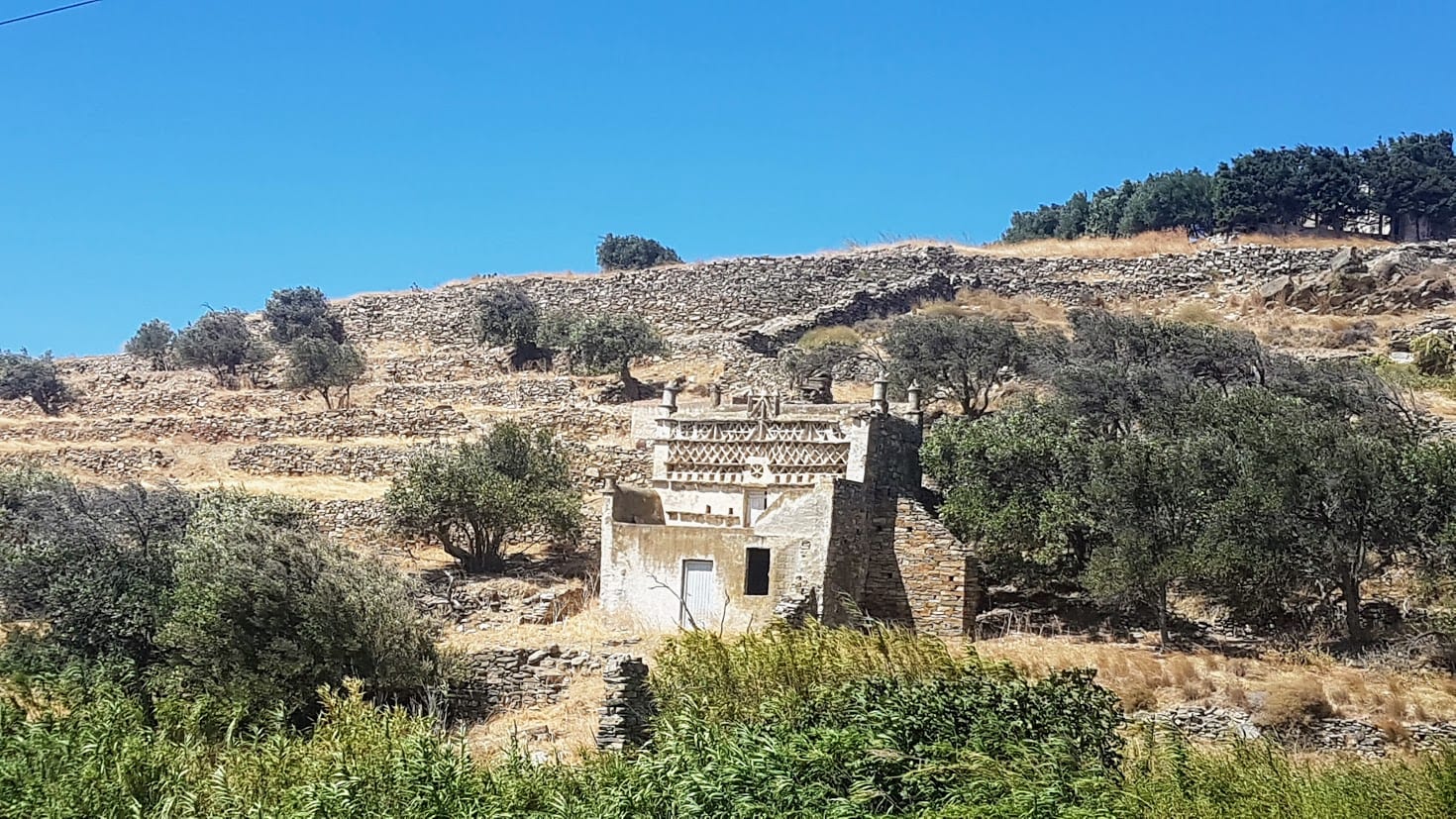
When in Tinos, you will notice some strangely decorated buildings. These pretty constructions are pigeon houses, also known as “dovecotes”.
There are probably more than a thousand of them on the island, and while many are crumbling, some of them have been maintained.
Pigeons are not only considered a delicacy, but pigeon-droppings are apparently an excellent fertilizer… we can’t say that we envy the job of the dovecote keeper!
Tinos also has a rich artistic culture. The island has marble of great quality, and many people who were born or lived here became famous for working with it.
If you visit the museums in Tinos, you will get a much better idea of the importance of this magnificent material for the life and economy of the island.
And beaches. Tinos in Greece has lots and lots of beaches!
When is the best time to visit Tinos?
The best time to visit Tinos depends on your main interests. If you don’t care much about swimming, but you want to hike around the island, you can visit in spring, when nature is at its best and temperatures are not too high. For most people, it might be too cold to swim then.
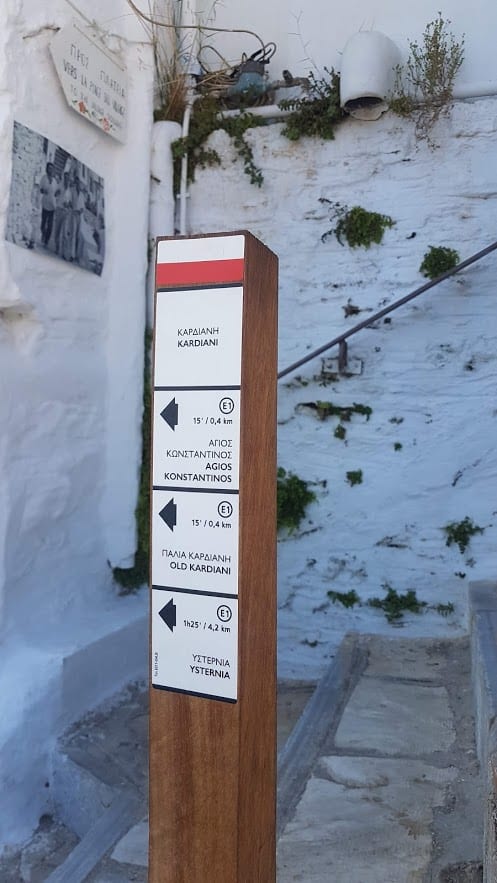
Visiting Tinos in summer can actually be slightly tricky because of the strong Meltemi winds. While these typically appear in July and of August, they hadn’t died off when we visited Tinos in early September.
As a result, swimming was not as easy as you’d think – plus staying on the beach wasn’t exactly relaxing!
Furthermore, if you are planning to visit Tinos around mid-August, you should keep in mind the Assumption Day, when accommodation might be quite scarce. The island is always very busy then, and prices go up.
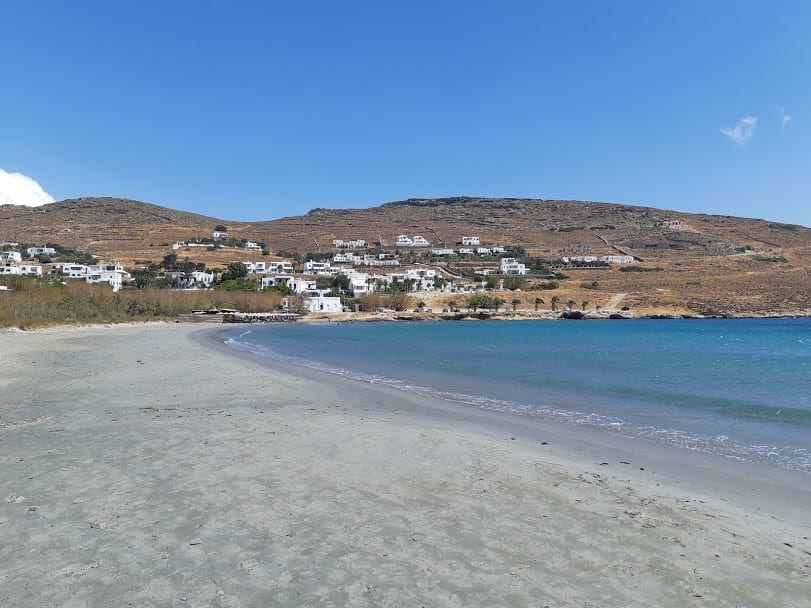
The best time to visit Tinos if you want to explore the beaches is probably September, when the winds have finally stopped and the sea temperature is higher than in spring. This is also a great time to hike around Tinos.
Finally, if you are really only interested in the villages and the landscapes, you might as well visit any time of the year. Tinos has a population of around 10,000 permanent residents, so you will always find somewhere to stay and eat.
We've a full guide here on the best time to visit Tinos and Andros in Greece.
Sightseeing in Tinos – The villages in Tinos
For most non-religious visitors, the main attraction to Tinos is its quaint villages. We visited over 30 of them, and in all seriousness each one was better than the other! You would need several days to explore them all. It’s just about possible to see the most important villages in Tinos in a couple of days, if you start early and make the most of your time.
Chora in Tinos
The main settlement in Tinos is actually more often referred to as Tinos, rather than Chora. We’ll be honest – it’s not the most picturesque town in the Cyclades islands. It’s pretty built up, and you won’t get to see many of the white-and-blue houses that are so representative of this area of Greece. This is where the port is also located, so you will get a glimpse once you arrive in Tinos.
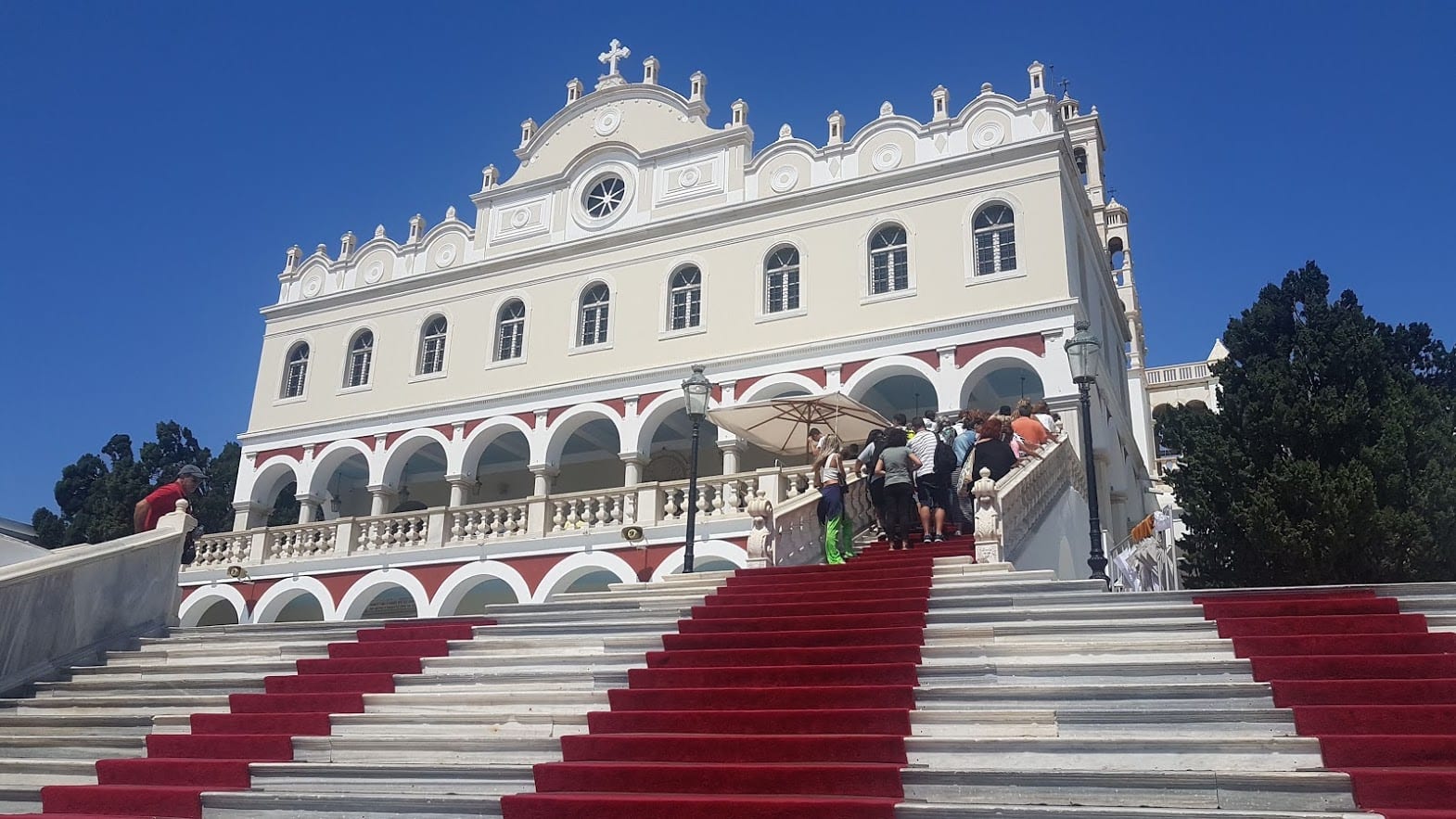
Our Lady of Tinos Church
The Chora is definitely worth stopping by though because of the massive Panagia Evangelistria church. By Greek standards, this is a very big church, and it’s one of the most important Greek Orthodox churches throughout the country.
It is open on a daily basis from early in the morning until late in the evening, though in our experience it’s busier in the mornings, when visitors come for a pilgrimage.
A nun with a vision
The story of how this Tinos island church was built is quite interesting. Shortly after Greece had been liberated by the Ottoman Empire, a Greek Orthodox nun had a vision. In that vision, the Virgin Mary explained where to find the Icon of Her Annunciation, which was buried in the ground.
After the Icon was discovered, the Church of Evangelistria was built at the site. It has since become known as the Our Lady of Tinos Church, or the Tinos Church of Miracles.
Around the church’s spacious courtyard, you will find a series of rooms that host several exhibitions of artworks and religious objects. Even if you are not religious you will definitely enjoy the various Byzantine icons, some of which are hundreds of years old. Make sure you also go upstairs, where several sculptures by Tinian artists are exhibited. All these collections are free to visit, though photography is not allowed.
You will undoubtedly notice a red carpet stretching all the way from the port to the church. People who are visiting Tinos on a pilgrimage will typically head to the church on their knees and hands. We were there in early September so we only saw a couple of people, but we hear that this is very common on the 15th of August.
You can find out more about the church in Tinos here.
![]()
There are two main streets going down from the church, where you can buy souvenirs, mostly leaning on the religious side.
Apart from the church, you can also visit the small Archaeological Museum in Tinos. We weren’t very impressed with the exhibits, but we are probably spoilt as we have seen so many museums all around Greece.
Pyrgos village Tinos
If you only have time for one village in Tinos, make sure you go to Pyrgos. It is a large, picturesque village up on the mountain, and is often included in half-day bus tours from Chora.
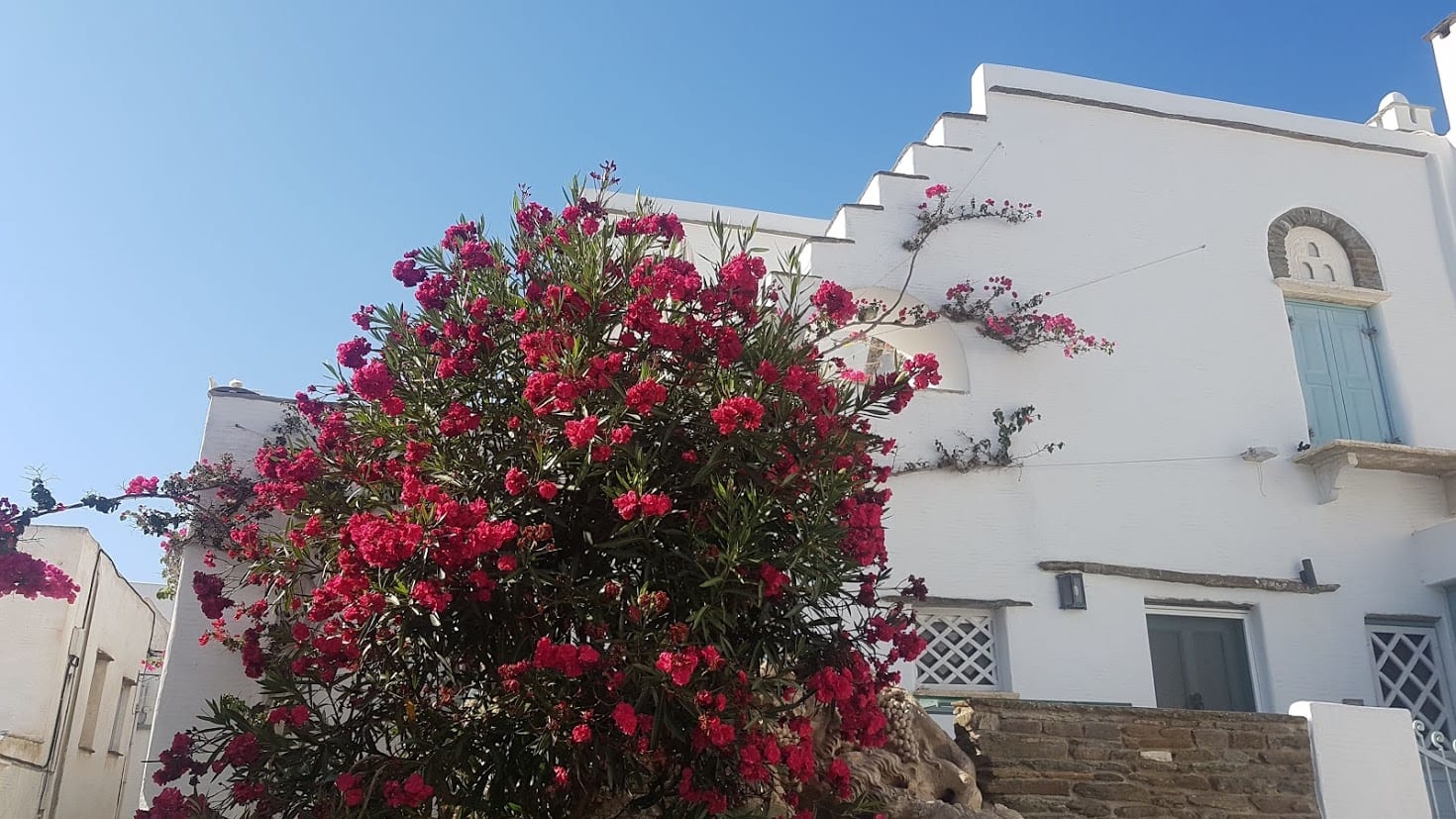
Pyrgos is very well kept, and you will really enjoy walking around. For us, its main attractions were its museums, the marble works and the atmospheric cemetery.
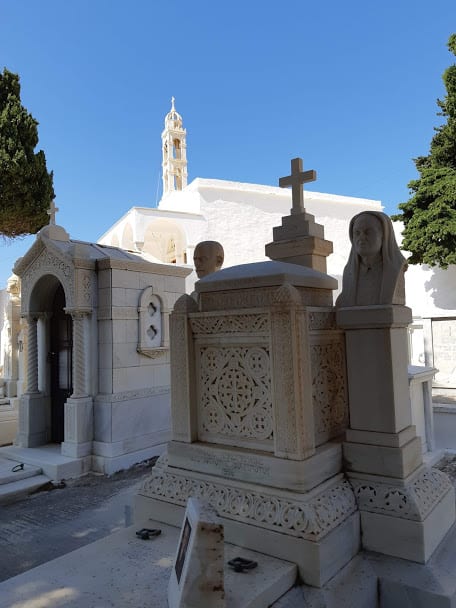
If you are driving around Tinos and using Google maps, Pyrgos is confusingly shown as Panormos. It’s best to leave your car in the designated parking area just before you get into the village. Then you can easily explore Pyrgos on foot, as everything is in walking distance.
The museums in Pyrgos, Tinos
There are three great museums in Pyrgos – the Museum of Marble Crafts, the Tinian Artists Museum and the Giannoulis Halepas museum. It doesn’t really matter what order you visit them in.
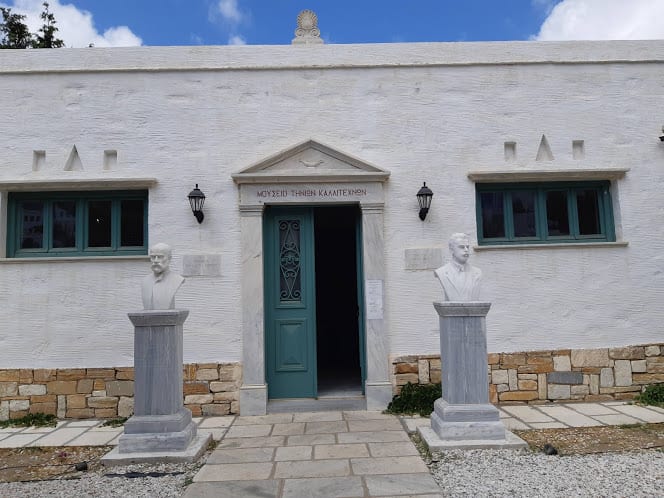
The Museum of Marble Crafts explains everything you wanted to know about marble and the art of sculpting. While at first this may not sound too exciting, it was actually very interesting to visit and really well-put together.
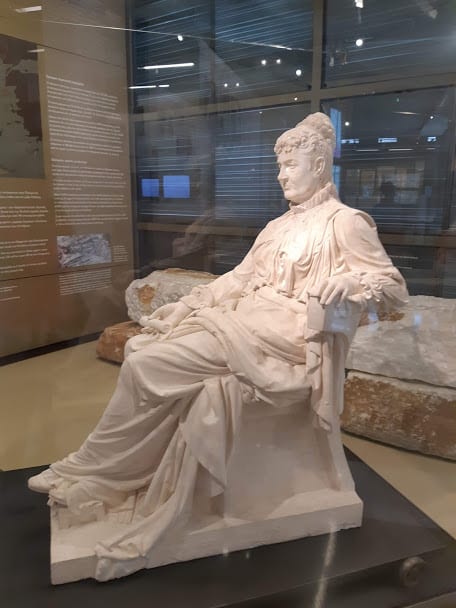
There are videos showing the procedures that the marble goes through, from being quarried to being transformed into beautiful artwork. It made us appreciate every single church we later saw on Tinos, let alone the ancient Greek statues! Here, you can also familiarize yourselves with the names and the works of the most prominent Tinian artists.
The Tinian Artists Museum is a small museum showcasing some of the works of famous Tinian artists. Although it might be more relevant for Greek people, it was still interesting to see a selection of sculptures and hear some stories about the artists. If you have already been to the museum of Marble Crafts, you might be able to recognize some of the artists’ names.
The Museum of Giannoulis Halepas is the original house of one of the most prominent Greek sculptors, Giannoulis Halepas. His story is truly a very sad one. As he was very attached to his art, he was pretty much confined by his family, who thought he was mad. After his mother’s death, he was free to create several magnificent works, many of which are very famous all around Greece.
The last two museums have a joint ticket, and when we visited Tinos in summer 2019 they were open all day long. Don’t quote us on this though, it’s best to ask your hotel to find out for you as any online information might not be exactly accurate. Remember, this is Greece!
Finally, do not leave the village without visiting the Pyrgos cemetery, which is decorated with marble works by several sculptors. Try to find a Greek speaking person to translate some of the plaques for you – some of them are fascinating.
Ysternia village Tinos
Ysternia (or Isternia) village is one of the largest and most important villages in Tinos. Many of the famous Tinian sculptors were born here.
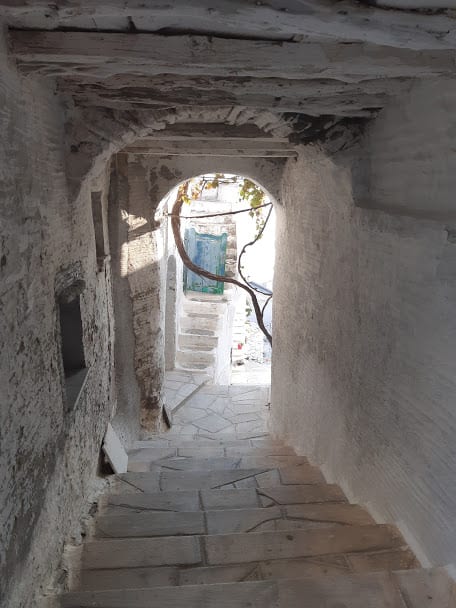
Unfortunately the small museum of Ysternian artists, which exhibits their works, was closed when we visited. Still, there are many impressive marble works to see all around the village, most notably the churches of Holy Trinity and Agia Paraskevi.
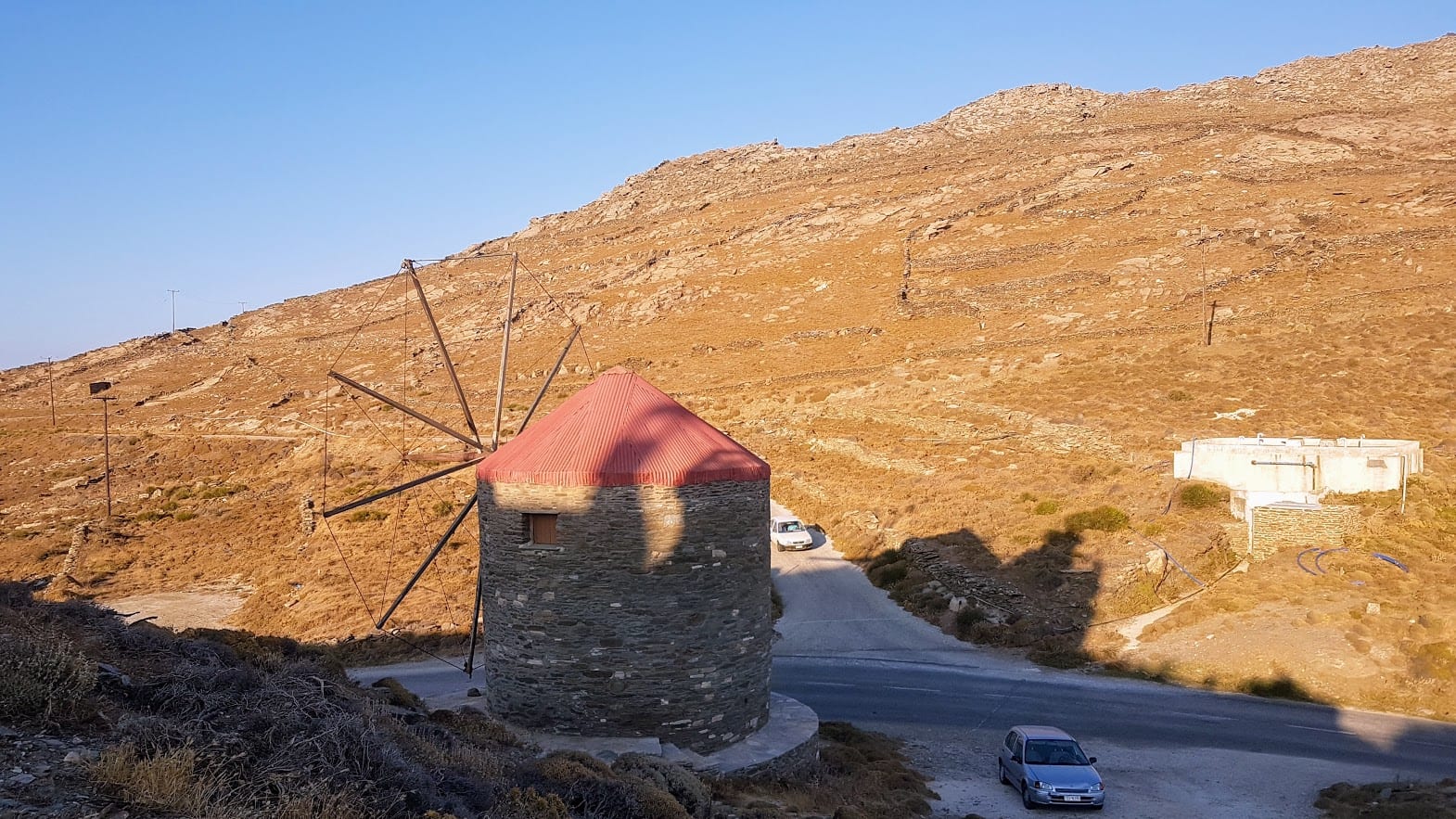
Close to Ysternia, you will see a group of old windmills and two little churches. When we drove there it was so windy, that even walking around was difficult! No wonder they built the windmills up here.
Kardiani village Tinos
Kardiani is a lovely village built right on a slope. You can leave your car at the designated parking spot, and walk around the stairs and uneven little streets. The village has the traditional white-and-blue houses that you would expect to see in a Cycladic island, and is really very picturesque.
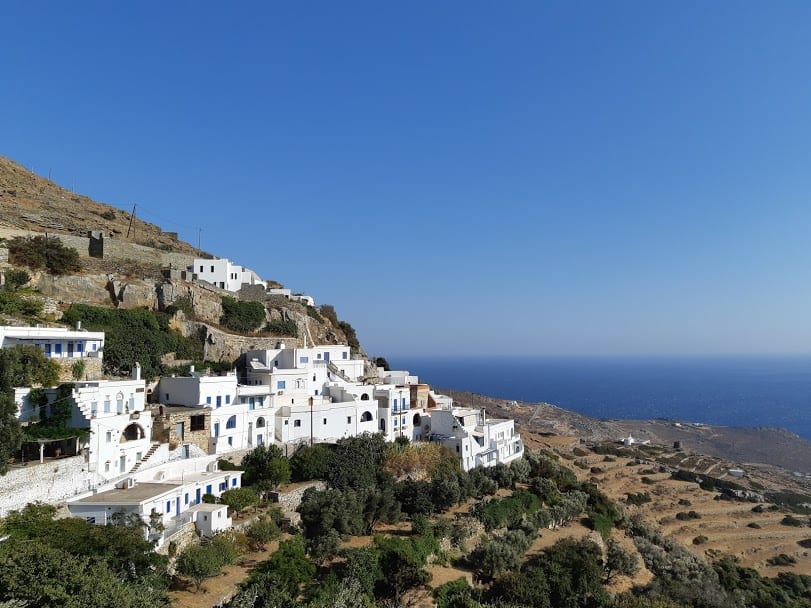
When we visited, they had put up a cool black and white photo exhibition, mainly with portraits of locals. It made us want to wander around everywhere!
Volax in Tinos
This was another quaint village in Tinos. The wider area, also called Volax, is fascinating, as it’s full of massive round stones made of granite. The landscape is really cool, and you are only likely to meet a few cows and goats.
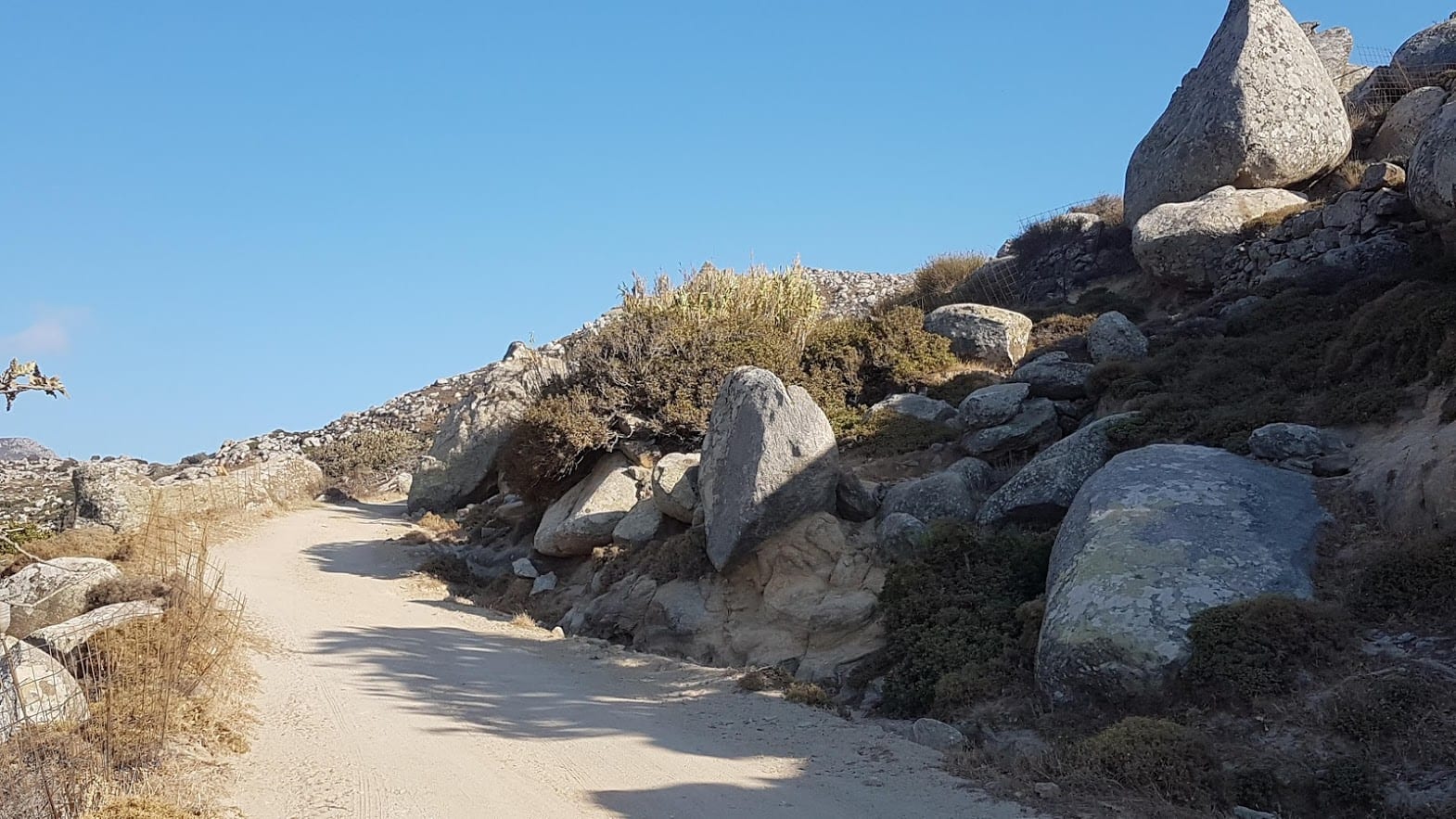
If you decide to rent a 4WD, follow the dirt roads towards the wider area of Falatados, up on the mountain, and then get back to Volax. We had our own car – we call it the Starlet Jeep!
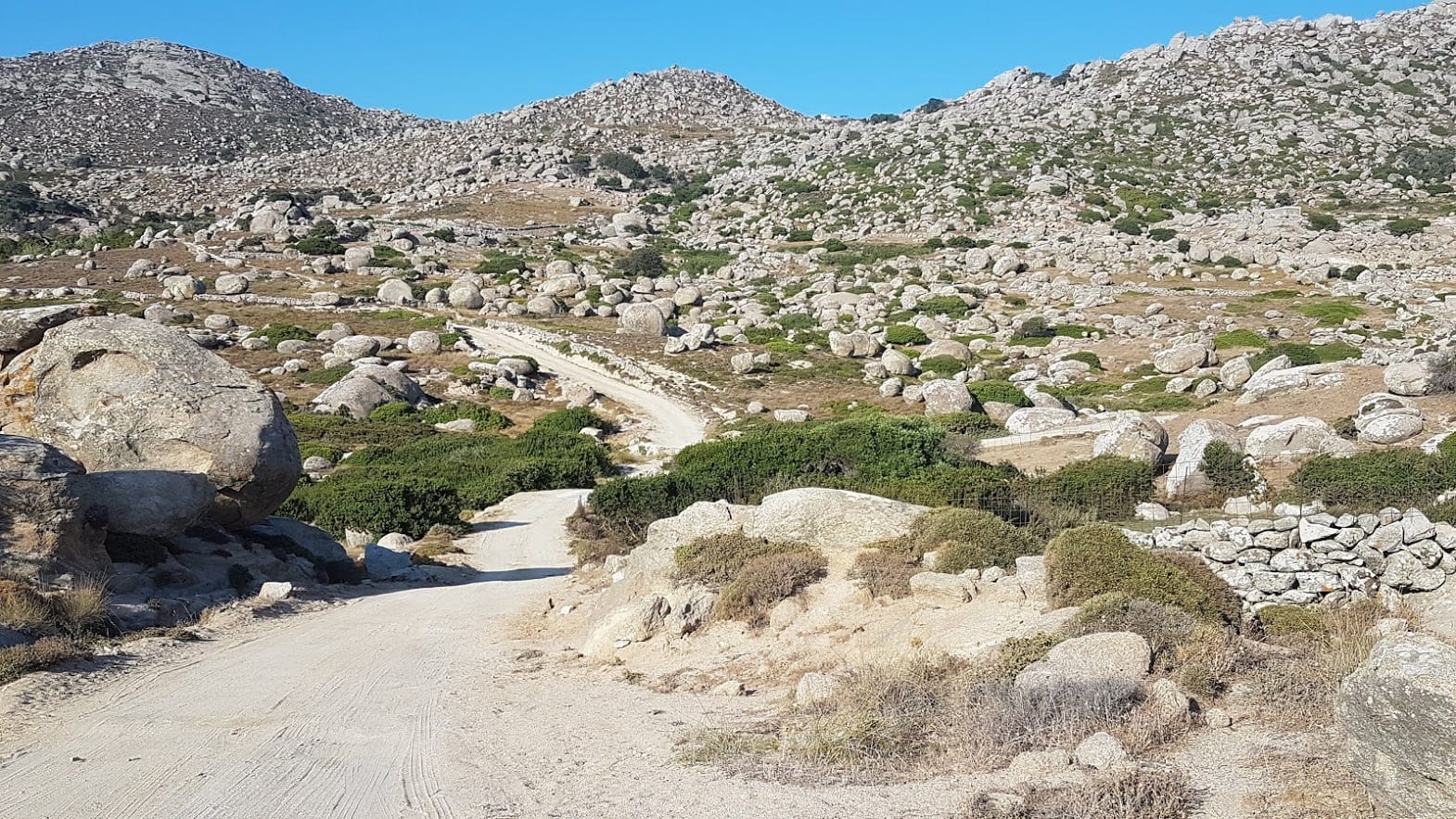
There are different theories as to how these stones got there. Was it the result of a volcanic explosion, over 20 million years ago? Could it be that the rocks were under the sea, and were rounded off because of the sea water and the sand? Are they, perhaps, meteorites? Are they just a common natural phenomenon, where granite is gradually rounded off because of the winds and chemical reactions? Perhaps it was the Titans who threw those stones over Tinos?
Who knows – the landscape is really cool, and photos don’t do it justice.
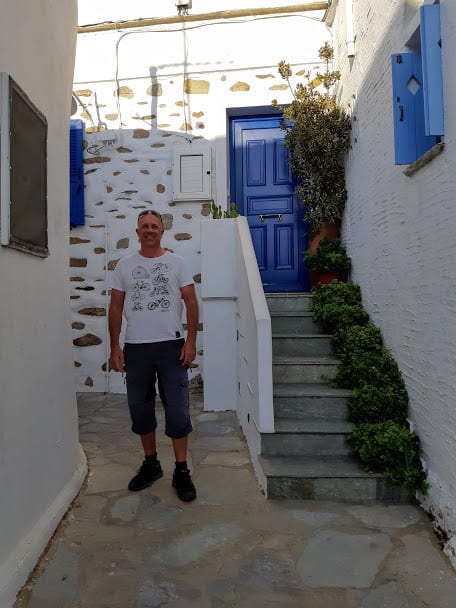
Volax village itself was probably our favourite village in Tinos. While many of the houses have been restored, others are crumbling or deserted.
The owners of one of the shops in Volax have made it their task to write verses of popular Greek songs on the wooden doors and windows.
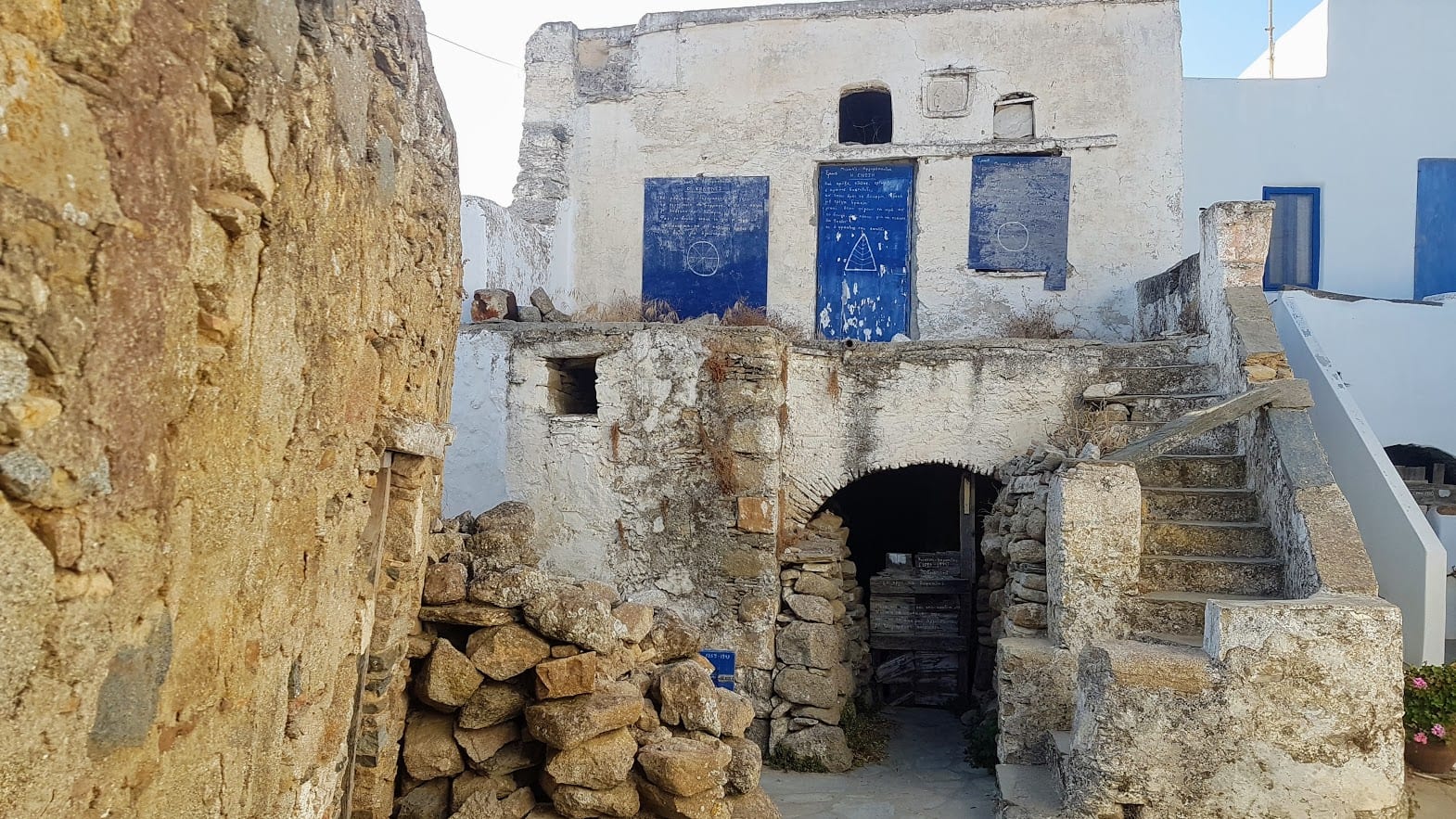
Some of the locals we spoke to were very friendly, and were very proud when we told them we really liked Tinos! If you like photography, you should definitely spend some time here. There are also a few places to have a meal or a drink.
Agapi village
Agapi means “Love” in Greek, and as such Vanessa definitely wanted to visit. It was actually one of the highlights of our trip to Tinos. The whole village is built entirely on a slope, and there are many stairs, steps, arches and other strange features. It is quite maze-like, which is intentional, as they were trying to keep invaders out of the village.
When we arrived at Agapi, we saw two or three people out on the narrow streets. Later on, pretty much all the villagers had gathered outside the church! It was really cool to observe the real village life. We had a great meal in Agapi, at a local café called “Oti Nanai”. The owners are a really friendly couple, and they made the biggest fourtalia omelette we’ve ever seen!
Other Villages in Tinos
There are many more villages in Tinos worth visiting. Our advice is to rent a car and set out to explore. Falatados, Mperdemiaros, Dyo Choria, Triantaros, Arnados, Mountados, Karya, Tripotamos, Kalloni, Ktikados, Krokos.

From some point onward, the names might not even be important. Just stop wherever you see a village in Tinos, and we guarantee that you will find something you like about each one!
Churches and Monasteries in Tinos
While from a visitor’s point of view Greece is full of churches, few places in Greece have as many churches as Tinos. You can literally see a church everywhere you look, and many of the areas and beaches on the island are named after the nearby church.
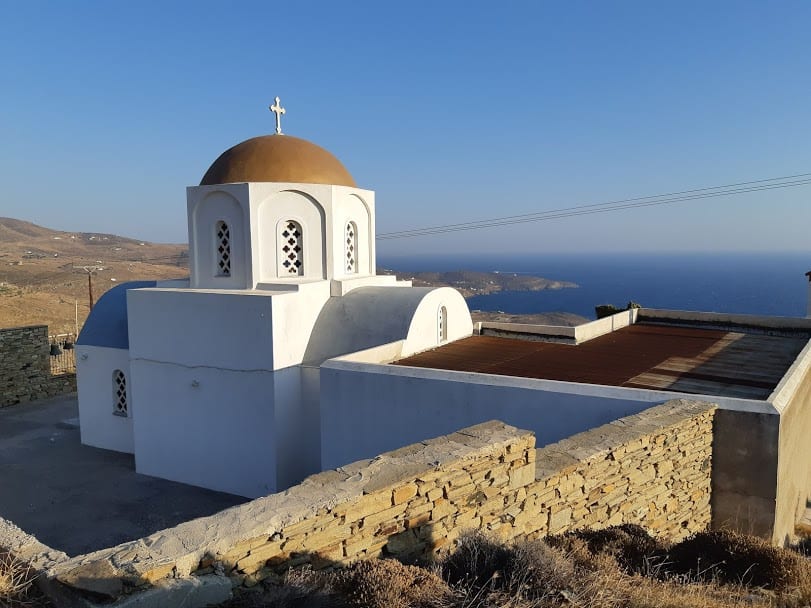
Churches in Tinos come in all shapes and sizes, and many materials are in use. You will see many simple, white-washed chapels, blue-domed and golden-domed churches, but also imposing temples made of the local marble.
While the official religion in Greece is Greek Orthodox, there are several Catholic churches all around Tinos. This includes monasteries and convents, which is fairly rare in Greece.
Visiting all the churches and monasteries on the island would take a considerably long time. Besides, there isn’t always a way to find any information on opening hours – even trying to call doesn’t always work!
The most important Orthodox monastery in Tinos is close to Arnados village, marked as “Moni Kimiseos Theotokou Kechrovouniou” on Googlemaps. Hundreds of nuns used to live here, though today there are just a few left. Unlike most of the villages in Tinos, the monastery is built like a castle, to protect from invaders, with white-washed walls and streets. Remember to bring something to cover your legs and shoulders!
In the Xombourgo settlement, you can also visit a Catholic Monastery, called Ieras Kardias, founded by Jesuit monks who came to Tinos during the 17th century. We didn’t visit, but it’s supposed to be very unique. It’s one of the most important pilgrimages for Catholics, and it hosts a big celebration on the second Sunday in July.
A place we found very interesting was the Ursulines Convent, near Loutro village. Now a museum, which is run entirely by volunteers, this ex-convent was founded by the Ursulines nuns. It initially functioned as a school for orphaned girls, but later became one of the most important girl schools in the whole of Greece. Many Greek women who later became famous went to school here, and studied Greek and French literature, as well as the arts.
Beaches in Tinos
Few people would mention Tinos among their favourite beach destinations in Greece. However, the island has plenty of lovely places to swim. Whether you want organized beaches or smaller, hidden coves, there will always be a place for you. Like mentioned above, avoid July and August, when strong winds might make it impossible to relax on the beach.
Many of the beaches in Tinos are easily accessible by car, and most of the roads that we took to the beaches were paved. There are buses to many of the beaches as well.
Agios Ioannis Porto beach
Agios Ioannis Porto, to the south of the island, is where we stayed in Tinos. On the map, the semi-circular sheltered bay seemed very well protected from the north Meltemia winds. Right? Wrong! On all our days there, it was simply impossible to swim at Agios Ioannis beach, unless we went at 7am. If you think that the Cyclades islands are really warm at 7am, guess again… they are not!
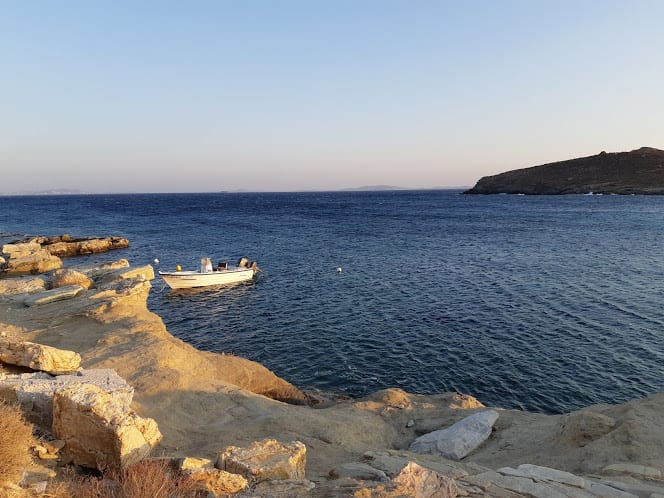
Regardless, Agios Ioannis is a beautiful sandy beach, and the sea is quite shallow, so it’s ideal for families. There are a few trees for shade, as well as a couple of beach bars with loungers and umbrellas.
Agios Sostis beach
Agios Sostis beach is a large sandy beach to the south of the island. In terms of wind, it was actually not too bad, though the wind normally picked up in the afternoon. There are a few beach bars, but there are also plenty of quiet spots, and you can also find natural shade.
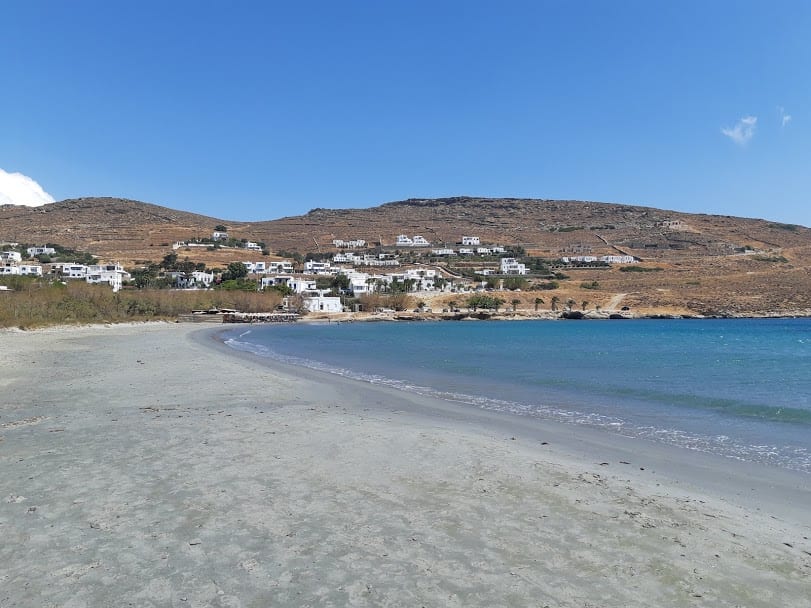
One day, just as we had packed our beach mats and towels and were ready to leave, a massive wave came over the area we were sitting a minute ago. We were very lucky, but here is a tip – don’t put your towels right by the sea, especially if you have children!
Fokas beach close to Chora Tinos
If you want to go swimming close to Chora in Tinos, your best bet is Fokas beach. You can even walk from the town if you feel like it, and there are also several buses going quite frequently during the day. The beach is fairly mixed, with beach bars, restaurants as well as quieter spots where you can put your towel.
Stavros and Agios Markos beaches
These two beaches to the west of the Chora are swimming spots rather than long, sandy beaches. They are both very close to a church, hence the names. These coves are well-known to locals, and Agios Markos gets busy on very windy days, as it’s very well protected from the winds. Parking won’t be easy, unless you are happy to park right on the road – like the Greeks.
Kionia beach
Kionia is one of the most popular areas to stay in Tinos, as there are several hotels, rooms to rent and restaurants. The long, sandy beach right in front of the town and the site is quite pretty, and it’s a good choice for a non-windy day. Across the sea, you can see Syros.
Right next to the beach, you can visit the Kionia archaeological site, for which unfortunately there is very little on-site information. You can see, or rather imagine, the remains of a temple, which was dedicated to Poseidon and his wife Amphitrite.
Apparently, this was the only temple in the Cyclades dedicated to the god of the sea, and people came from all over the wider area of the Mediterranean for a pilgrimage. The temple was built in the 3rd century BC, and was abandoned in the 4th century AD.
Agios Romanos beach
This sandy beach, looking towards Syros island, might be one of the best beaches in Tinos on a windy day. There are a couple of beach bars and several trees, so you can put your towel down and watch the world go by. The sea seemed particularly cold here! There are two ways to get to the beach – both of them are winding and quite narrow, but reasonably easy to drive on.
Kardiani beaches
On the day we visited Kardiani village, we actually ran out of time to see the three beaches below the village, so we have no personal experience. Agios Petros, Kalivia and Ormos Giannaki are all easily accessible, and quite different to each other.
Agios Petros is a long, narrow, secluded beach. There are both pebbles and sand, and it will be difficult to put up an umbrella – so you can either get here early and find some shade, or just enjoy the sun. You will need to walk down a fair few steps to the beach. Bring a mask and snorkel, as there is a shipwreck near the coast that you can explore.
Kalivia is another fairly protected sandy beach, which is easily accessible and as such can get quite crowded. Reports on the beach bar’s music quality and volume were quite mixed, so be prepared!
Ormos Giannaki is another protected beach with a mix of sand and pebbles. You can get there by car, or hike from Kardiani village. There are a couple of tavernas and a few places to stay, so it can be a great choice if you want to relax.
Ormos Isternion
Isternia bay used to be the port of Tinos in ancient times. Today, there is a short promenade with a few tavernas, restaurants and cafes, and a small beach with a few shaded areas. We were here just before sunset and would have loved to stay for a drink or a meal, but some insect repellent and warmer clothes would have been very handy.
Panormos beaches close to Pyrgos
One the day you are planning to visit Pyrgos, start your day early and leave some time to visit the three lovely beaches in the area – Agia Thalassa, Ormos Panormou and Rochari. One day is not enough to go to all three, so you are very likely to return!
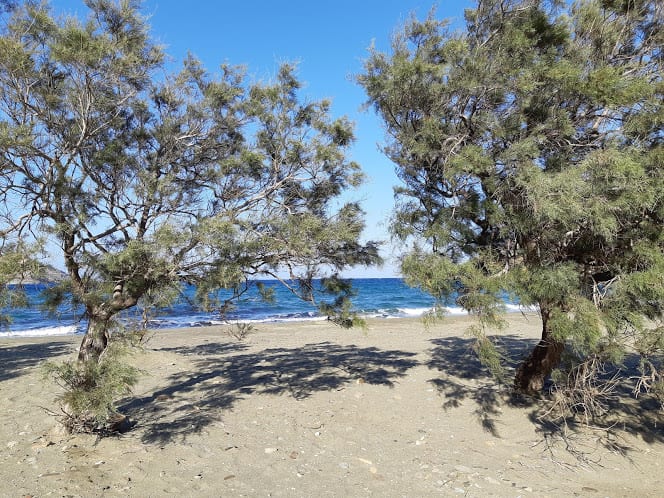
The Ormos Panormou / Panormos Bay settlement is a very picturesque little town. There are plenty of restaurants and cafes, as well as a few rooms to let. The local beach is nothing special, but if you decide to base yourself here it’s great for a quick swim. Bus routes to Ormos Panormou aren’t that frequent – we picked up a couple of hitchhikers on the way, and saw a few more trying to get a lift.
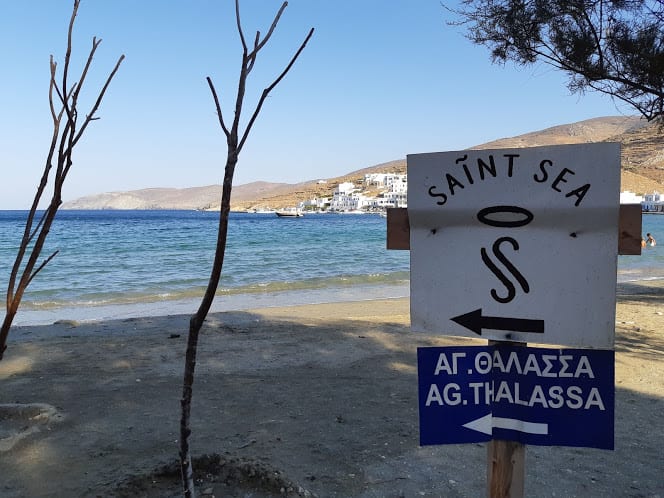
If you are happy to drive on a narrow dirt road for a couple of kilometres, Agia Thalassa / Saint Sea beach is probably the best choice on the whole island. It is protected from the wind, there is a beach bar, and there is also plenty of shade.
Despite the dirt road, the beach was actually relatively crowded. If you are a good swimmer, you can cross over to the small island nearby, called “Planet”.
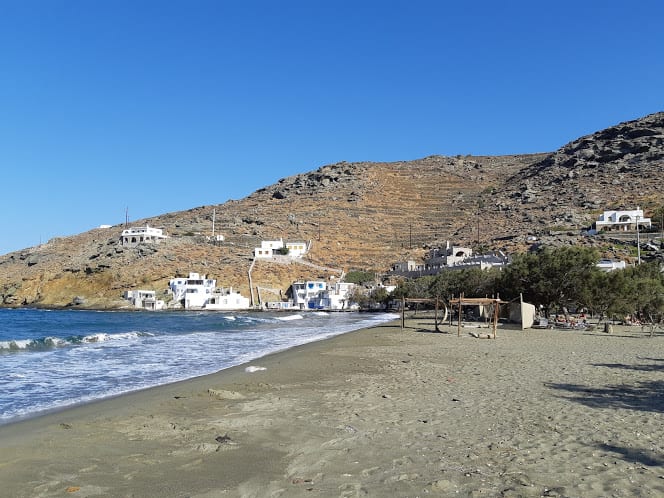
Close to Panormos Bay, you can find Rochari beach which has a freecamping / surfers’ paradise vibe. There are many trees, so you will most likely be able to find some shade and spend the whole day. There is also a beach bar and even a shower.
Kolimvithra
If we had to vote for our number one beach in Tinos, it would probably be Kolimvithra – we are torn between this one and Agia Thalassa.
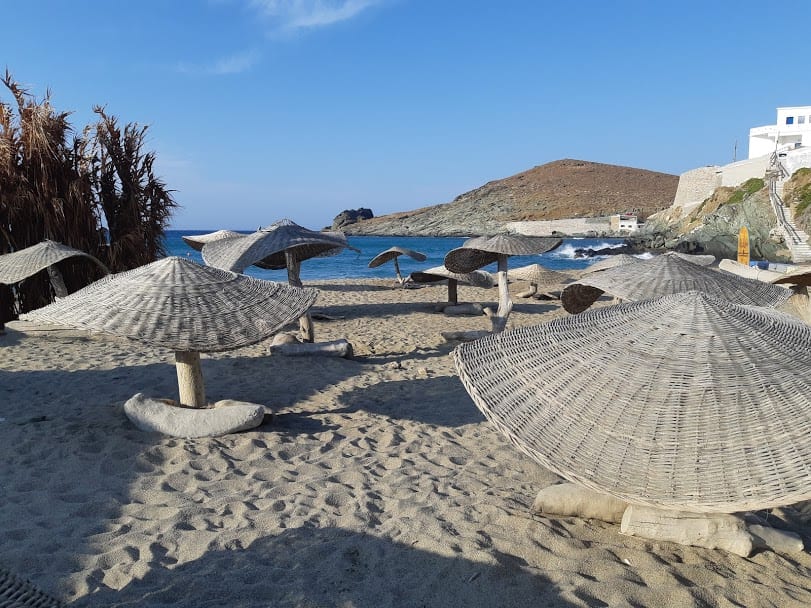
Kolimvithra was pretty much the only beach we managed to relax on while in Tinos, as it’s protected from the winds. It’s a long sandy beach, with a cool beach bar on one side and a large, unspoilt area on the other side. The drive to the beach is fantastic, as the whole area is full of reeds.
Santa Margarita beach
Locals discouraged us from trying this secluded, sandy beach out because of the wind. From the descriptions, we think that on a quiet day it would probably have been one of our favourites. You can get there through a paved but narrow road. Bring what you will need for the day, as there is no canteen or beach bar.
Lychnaftia beach
We ended up here rather randomly, as we were exploring the area. It is a pebbly beach, and we wouldn’t recommend swimming here when it’s windy, as you may actually get hurt. If you don’t want sand flying in your face though, this is actually a good choice.
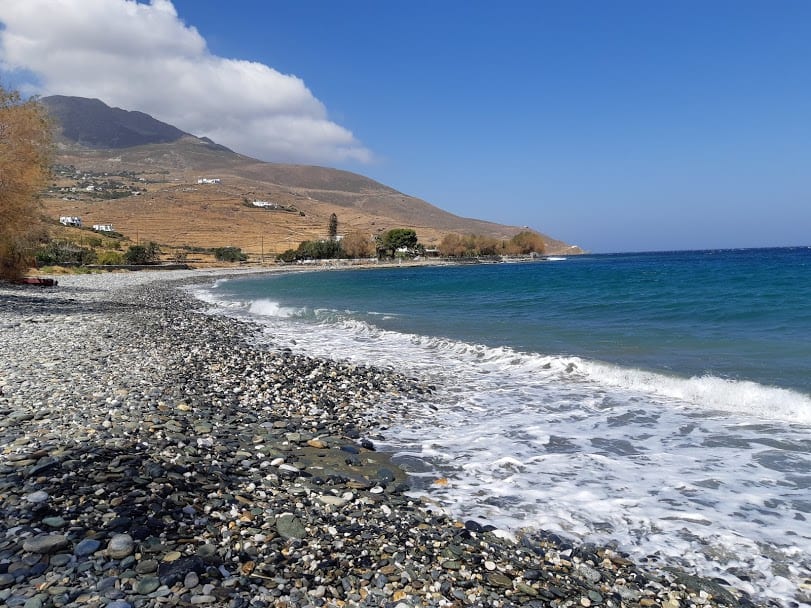
If you drive here, you will need to walk for a few hundred metres to get to the beach, and the location is really quite cool, with many reeds and a few houses here and there. There is no canteen or beach bar, so bring everything you need with you. If you look across the sea, you can see Mykonos.
Pachia Ammos beach
Meaning “fat sand” in Greek, this beach is really a long, wide stretch of sand with many sand dunes. You will need to walk down a path to get to the beach. Unfortunately, it wasn’t possible to stay here with the strong winds, but we will definitely return when we visit Tinos again.
Hiking and other outdoors activities in Tinos
If you are into outdoors activities, you will be pleased to know that Tinos has a long network of hiking trails, similarly to nearby Andros. When you are walking around the villages, you will see several signs indicating the hiking trails.
Apart from hiking, Tinos has a designated climbing area close to Xombourgo. There are around 90 routes, ranging in difficulty. You can find more information here. The Volax area is also suitable for bouldering activities.
</a8
Where to stay in Tinos
To a certain degree, where to stay in Tinos depends on what you are mainly interested in, and how you are planning to get around. There is a lot of accommodation to choose from, with rooms spread around the island.
Most people prefer to stay in Agios Ioannis, Agios Sostis, Kionia or Panormos, in order to be close to the beach. Others are happy to stay in the picturesque villages of Pyrgos, Volax, Ysternia or Agapi. Chora has a choice of places to stay as well. Check our detailed article with information on where to stay in Tinos.
Getting around Tinos – Bus
If you are visiting Tinos in summer, you will notice that there are fairly frequent buses going around the island. These buses are called KTEL buses. You can find the bus timetable here, and plan your day accordingly. That said, there are so many places worth visiting that you will have to make some very tough decisions.
Rent a car Tinos
If you are comfortable driving around narrow, winding mountain roads, the best way to get around Tinos is to rent a car. The island has its fair share of dirt roads, so if you like exploring off-road you would benefit from a 4WD. If you only want to visit a few of the villages and the most popular beaches, a normal car would do.
Read our extensive article here on getting around Tinos.
Eating in Tinos
Perhaps the most instantly recognizable delicacies from Tinos are the sugar-coated amigdalota, super sweet marzipan cakes that are sold all over the island. You will find several types and flavours in many stores around Chora.
Tinos has a wide selection of local cheeses, made exclusively from cow milk, at least in our experience. In fact we saw several cows around the island, but we were a little surprised that we didn’t find any goat cheese, as there were goats everywhere in Tinos. Who knows! There are also many local pies with cheese.
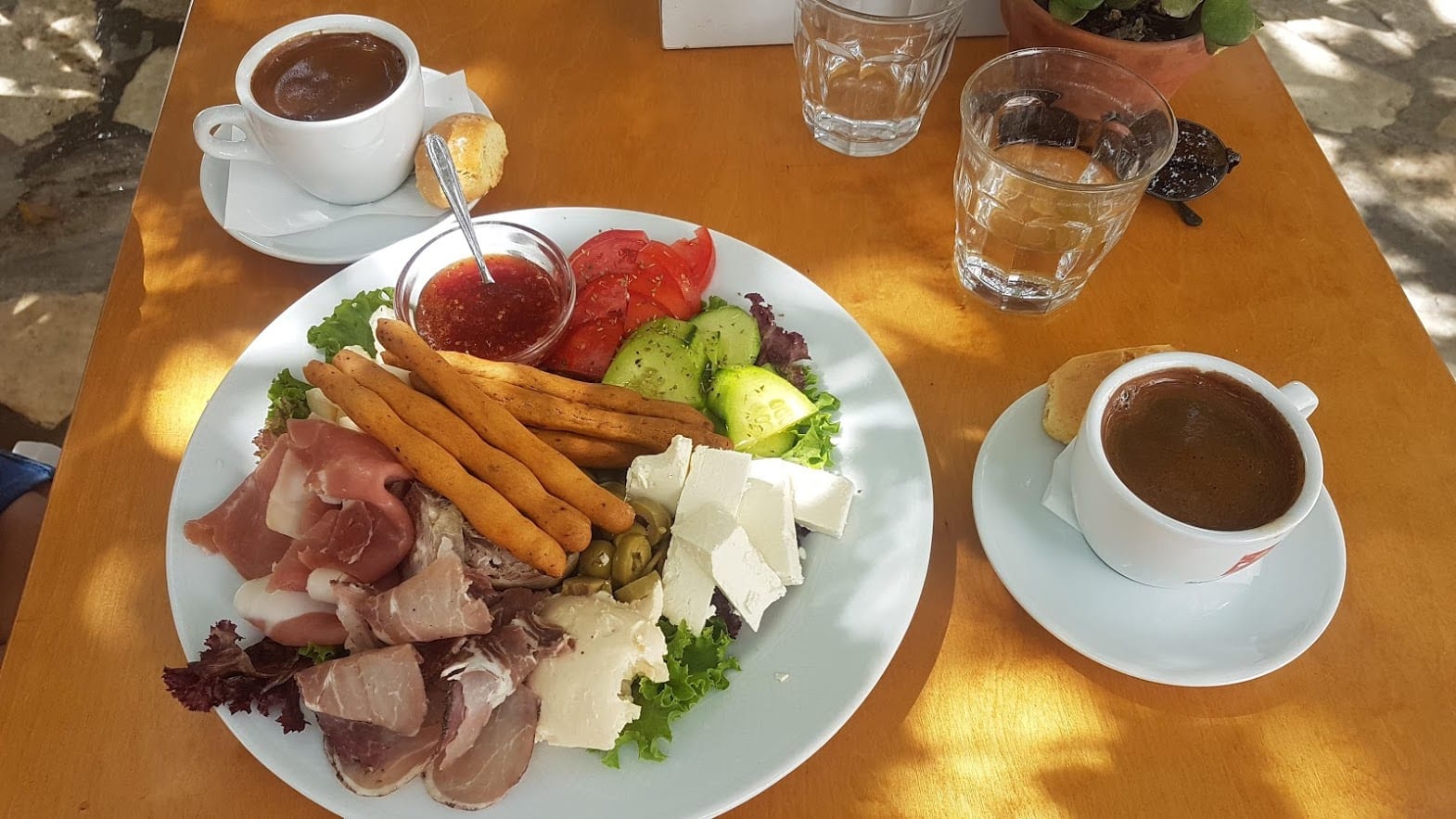
Traditional sausages and meat products are also very popular. If you don’t want a proper main course, you can always get a selection of the local cured meats and cheeses. This was at a small café in Dio Choria, and you should be able to find something similar pretty much everywhere.
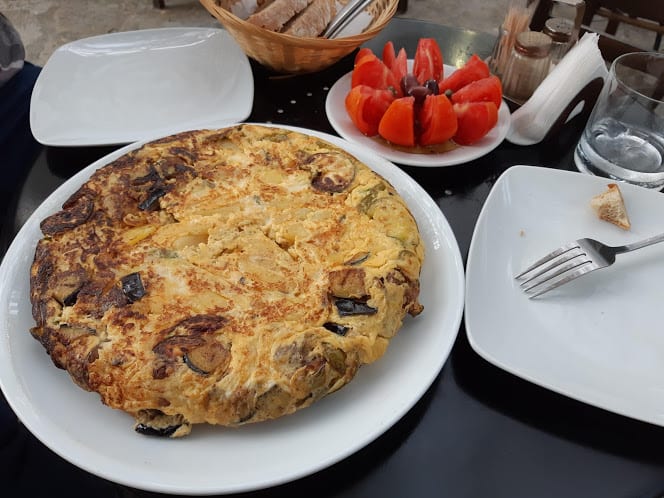
The local sausages are also used in the famous fourtalia omelettes, which also include potatoes and maybe cheese and other vegetables. If you order an omelette make sure you are hungry as they are normally huge! This was in the village called Agapi, and it was more than enough to feed two hungry people.
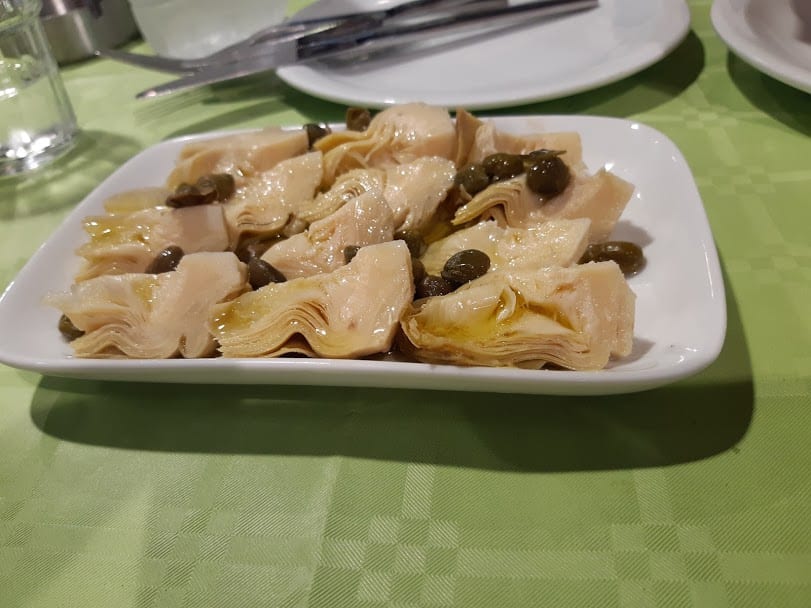
Another dish we tried in Tinos was the local artichokes, which seem to be a big thing in Tinos. Though some people (Dave included) might not be interested in tasting them, the Mrs said they were absolutely delicious.
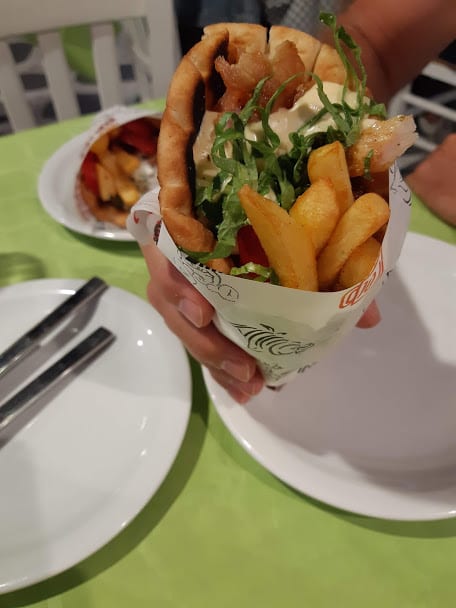
Looking for simple cheap food? You can't go wrong with a good pork gyros!
Tinos Island FAQ
Readers planning a trip to Tinos often ask questions such as:
Does Tinos have nice beaches?
The most attractive and restful beaches on Tinos are found on the island's southern tip: Agios Ioannis Porto beach, Agios Sostis beach, Agios Romanos beach, and Kionia Beach are a few of them. The beaches in the south are generally more popular and well-organized, with plenty of hotels, tavernas and cafes.
How many days do you need in Tinos?
Try to spend between One and Three days in Tinos in order to enjoy its laid back, un-rushed nature. Tinos island may have gained a slightly higher profile in recent years, but it still remains one of the most authentic Greek islands in the Cyclades.
Is Tinos expensive?
Tinos is very inexpensive when compared to nearby Mykonos or the much more famous Santorini. Accommodation prices are far lower, and and you'll be paying local prices for restaurant meals.
How do you get to Tinos?
You can travel to Tinos by ferry from either the port of Piraeus or from Rafina port in Athens. Tinos is also connected to other islands in the Aegean Sea such as Mykonos and Andros. There is currently no airport on Tinos.
How long is the ferry from Mykonos to Tinos?
Tinos and Mykonos are very close to one another, and the ferry ride between them lasts from 15 to 35 minutes.
Guide to Tinos in Greece
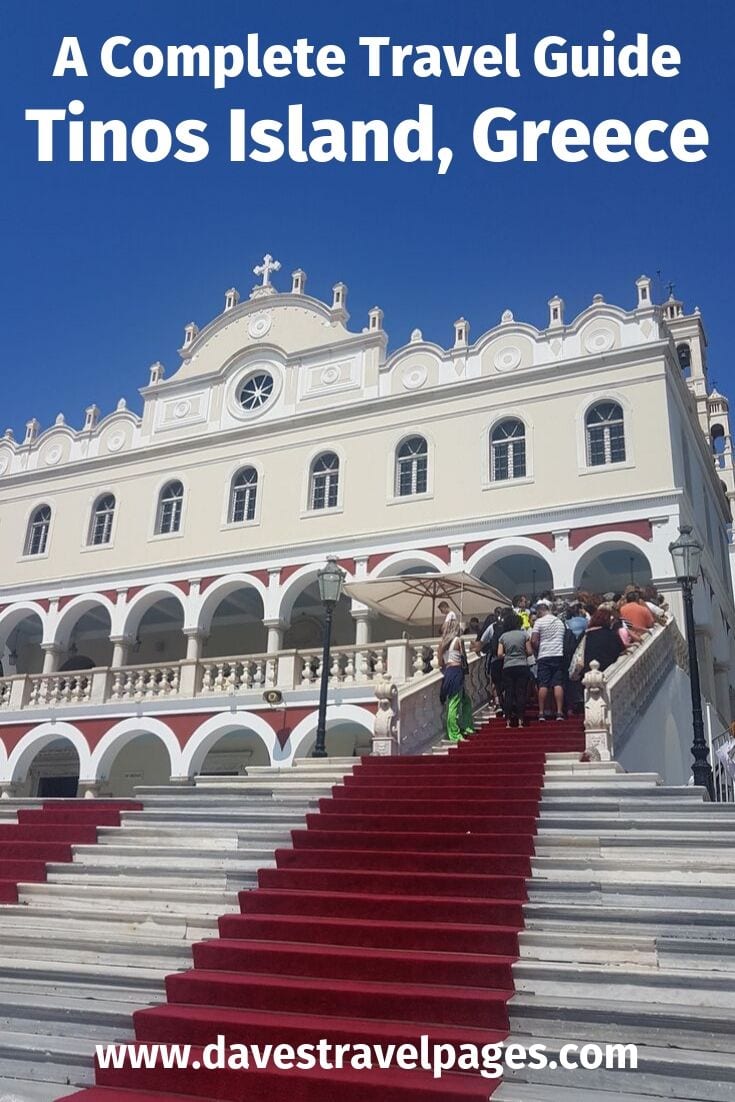
We hope this guide to Tinos has inspired you to visit this beautiful island. If you have been to Tinos, let us know what you thought! Looking for where to travel next after spending time on the island? Check out our guide to islands near Tinos.
 – Dave Briggs
– Dave BriggsDave's travel writer from the UK who's been living in Greece since 2015. As well as writing this travel guide to Tinos island in Greece, he's also written hundreds of travel blog posts and itineraries for other islands and travel destinations all over Greece. Follow Dave on social media for travel inspiration from Greece and beyond:
This was such a thorough and excellent page of information. I’m so glad I stumbled across you. Thanks for sharing! I’ll certainly bookmark you and share with my clients!
Glad you found this Tinos travel information helpful!